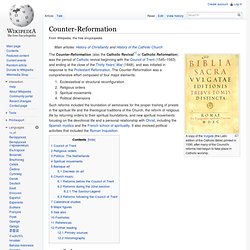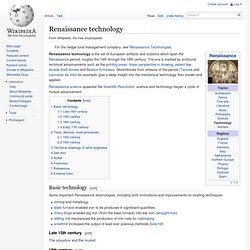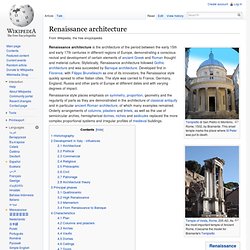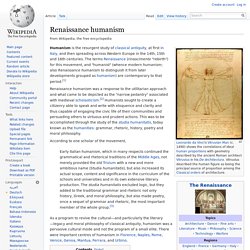

Renaissance. The Renaissance (UK /rɨˈneɪsəns/, US /ˈrɛnɨsɑːns/, French pronunciation: [ʁənɛsɑ̃s], from French: Renaissance "re-birth", Italian: Rinascimento, from rinascere "to be reborn")[1] was a cultural movement that spanned the period roughly from the 14th to the 17th century, beginning in Italy in the Late Middle Ages and later spreading to the rest of Europe.

Continuity thesis. Counter-Reformation. A copy of the Vulgate (the Latin edition of the Catholic Bible) printed in 1590, after many of the Council's reforms had begun to take place in Catholic worship.

The Counter-Reformation (also the Catholic Revival[1] or Catholic Reformation) was the period of Catholic revival beginning with the Council of Trent (1545–1563) and ending at the close of the Thirty Years' War (1648), and was initiated in response to the Protestant Reformation. The Counter-Reformation was a comprehensive effort composed of four major elements: Ecclesiastical or structural reconfigurationReligious ordersSpiritual movementsPolitical dimensions Council of Trent[edit] A session of the Council of Trent, from an engraving.
Pope Paul III (1534–1549) initiated the Council of Trent (1545–1563), a commission of cardinals tasked with institutional reform, addressing contentious issues such as corrupt bishops and priests, indulgences, and other financial abuses. Religious orders[edit] History of science in the Renaissance. During the Renaissance, great advances occurred in geography, astronomy, chemistry, physics, mathematics, manufacturing, and engineering.

The rediscovery of ancient scientific texts was accelerated after the Fall of Constantinople in 1453, and the invention of printing which would democratize learning and allow a faster propagation of new ideas. But, at least in its initial period, some see the Renaissance as one of scientific backwardness. Historians like George Sarton and Lynn Thorndike have criticized how the Renaissance affected science, arguing that progress was slowed for some amount of time. Humanists favored human-centered subjects like politics and history over study of natural philosophy or applied mathematics. Renaissance technology. Renaissance science spawned the Scientific Revolution; science and technology began a cycle of mutual advancement.

Basic technology[edit] Some important Renaissance technologies, including both innovations and improvements on existing techniques: Late 15th century[edit] Renaissance art. Renaissance architecture. Tempietto di San Pietro in Montorio, Rome, 1502, by Bramante.

This small temple marks the place where St Peter was put to death. Renaissance architecture is the architecture of the period between the early 15th and early 17th centuries in different regions of Europe, demonstrating a conscious revival and development of certain elements of ancient Greek and Roman thought and material culture. Stylistically, Renaissance architecture followed Gothic architecture and was succeeded by Baroque architecture. Developed first in Florence, with Filippo Brunelleschi as one of its innovators, the Renaissance style quickly spread to other Italian cities. The style was carried to France, Germany, England, Russia and other parts of Europe at different dates and with varying degrees of impact. Historiography[edit] Development in Italy - influences[edit] Renaissance humanism. Humanism is the resurgent study of classical antiquity, at first in Italy, and then spreading across Western Europe in the 14th, 15th and 16th centuries.

The terms Renaissance (rinascimento "rebirth") for this movement, and "humanist" (whence modern humanism; also Renaissance humanism to distinguish it from later developments grouped as humanism) are contemporary to that period.[1] Renaissance humanism was a response to the utilitarian approach and what came to be depicted as the "narrow pedantry" associated with medieval scholasticism.[2] Humanists sought to create a citizenry able to speak and write with eloquence and clarity and thus capable of engaging the civic life of their communities and persuading others to virtuous and prudent actions.